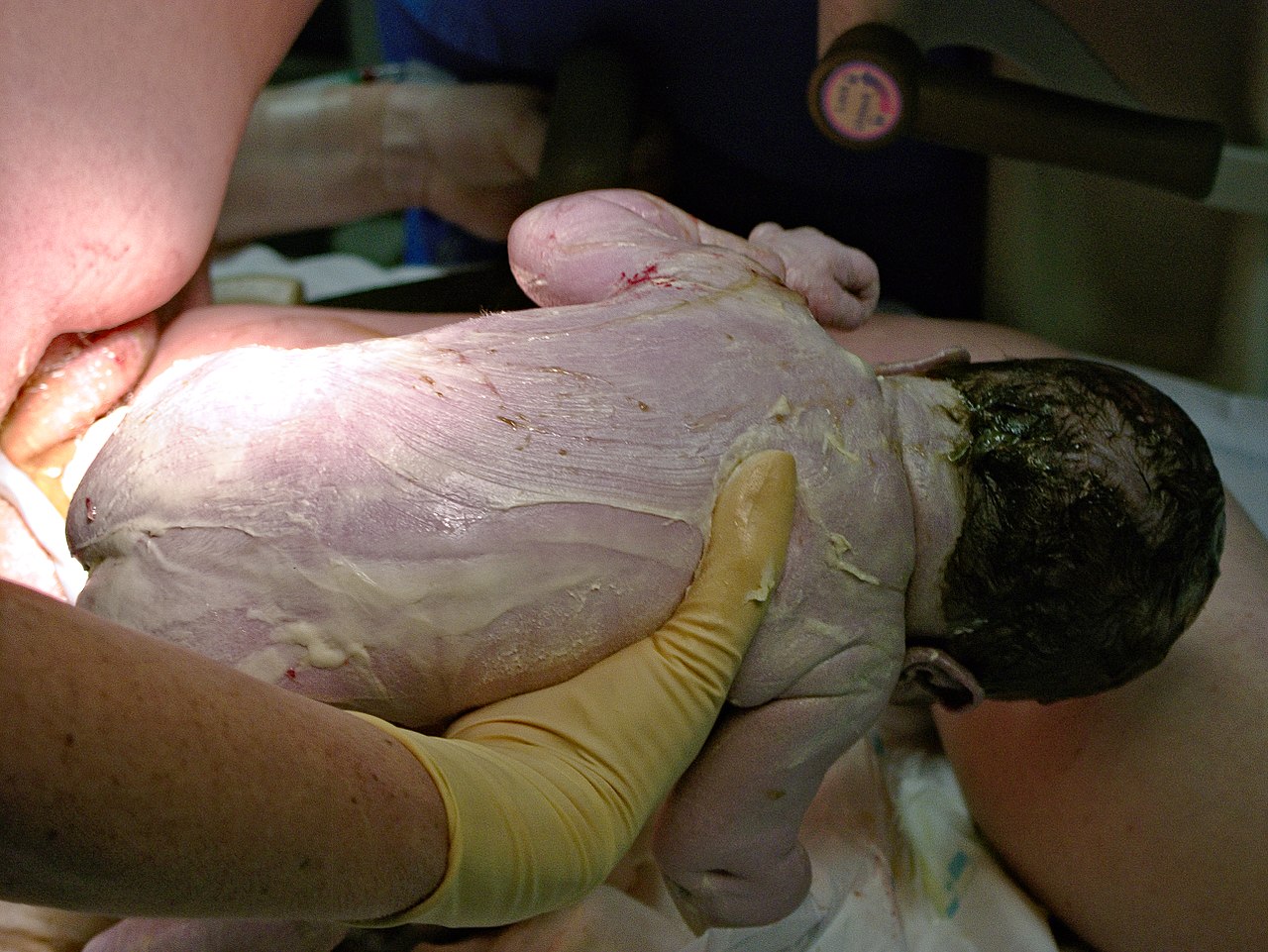A white, waxy substance that covers the fetus in the uterus.
Vernix caseosa, also known as vernix or birthing custard, is the waxy white substance found coating the skin of newborn human babies. It is produced by dedicated cells and is thought to have some protective roles during fetal development and for a few hours after birth.
Vernix appears in all full term infants but with widely varying body-coverage, while premature and post-mature births generally do not display any.
It is theorized (and observed) to serve several purposes:
Electrical isolation of the fetus (this affects accurate fECG measurement of fetal heartbeat).
Waterproofing the skin, whilst in gestation.
Lubricating the infant’s skin, and facilitating easy passage through the birth canal.
Preventing infections — primarily as a mechanical barrier and secondarily via the presence of lysozyme, lactoferrin and antimicrobial components in peptide layer.
Moisturizing the stratum corneum whilst in gestation (and controlled drying in post-partum phase).
Thermoregulation in post-partum phase — evidence is mixed.
Quick healing of epidermal wounds.
Development of gut, after intra-uterine consumption.

Llapissera, CC BY-SA 4.0 via Wikimedia Commons
https://en.wikipedia.org/wiki/Vernix_caseosa
